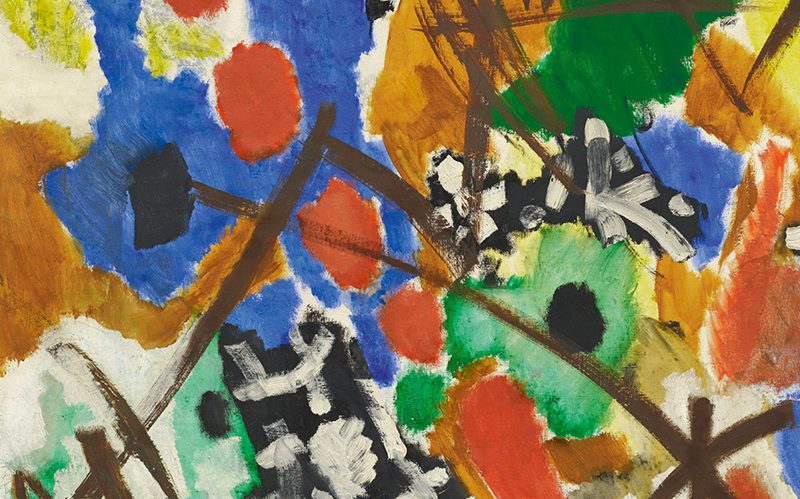
Ernst Wilhelm Nay is among Germany’s most prominent post-war painters.
His “Rhythmic Pictures” signalled the artist’s ultimate rejection of representational art – a move likewise reflected in his 1953 painting “Einklang” (Harmony), which will soon be going up for auction.
by Petra Schäpers and Susanne Zimmermann

“Pictures come from Pictures”
Ernst Wilhelm Nay (1902–1968) belongs to a generation of artists that embraced abstractionism and renounced the representational style prevalent before WWII, drawing criticism that saw their work ostracized as a result. He managed to translate his own sophisticated theory of painting into masterful painterly freedom.
Nay never considered his creative theory a corset; instead, it was a precept for the picture in the making: “Pictures come from pictures”, he said in 1962.
Pure, expressive colours
Defamed as “degenerate” by the Nazis, Nay retreated to the Norwegian Lofoten. With his early “Lofoten” and “Hecate” pictures, which are named after a painting inspired by mythology, he continued in the 1940s and 1950s to produce expressive and surreal works, increasingly abandoning representational style in favour of pure, expressive
colours.
Nay finally freed himself from the fetters of representational painting after relocating from the rural Taunus region to renascent Cologne in 1951.
Harmony
“Einklang” (Harmony) from 1953, is associated with Nay’s “Rhythmic Pictures” phase – a series produced after he had taken to foregrounding the principle of composition in 1952.
The moving rhythm materializes through finer, spontaneous or related shapes of elementary colours accompanied by black line structures that dictate the rhythm.
In “Einklang” (Harmony), the primary colours blue, yellow and red in the left upper third of the picture suggest a point of departure. The oval, red dashes of colour, eventually meet with cool green, which is connected to two dark blue fields by black lines and a black spot in its centre. Golden ochre is the connecting link between the cool and warm colours and the individual elements of form and colour, just as short, white brushstrokes on black fields briefly disquiet the composition in a staccato fashion.

Apropos of music: Nay’s deep interest in both classical and progressive music caused the impromptu element to slowly fade into the background, while strict compositions increasingly structured the surface relief.
The Gestalt principels of colour was eponymous for Nay’s 1955 manifesto and crucial for his “Rhythmic Pictures”. The first flecks of paint applied to the canvas transform the surface into background; any further dash renders visible the illusive value of colour.
In the 1955 manifesto the artist wrote about his works from the early 1950s that “warm and cold confront one other in a 3:2 ratio. […] The balance of the entire colour field develops from colours intertwining and encroaching on each other. A colour composition emerges.”
AUCTIONS
Post-War and Contemporary Art I
27 November 2018, 6 pm
Palais Dorotheum, Vienna
Post-War and Contemporary Art II
29 November 2018, 5pm
Palais Dorotheum, Vienna
Preview: 17 November 2018












